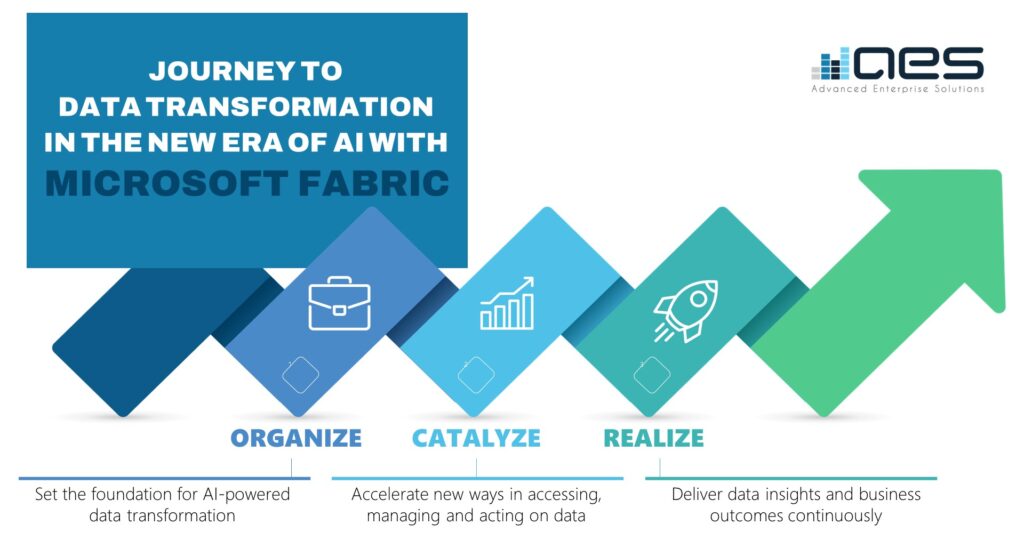The AES Group, in partnership with Playtime Solutions, has crafted a robust and comprehensive approach to help organizations resolve their data challenges, move to Microsoft Fabric and usher into their new AI-powered businesses. The Realize stage, in particular, is pivotal for organizations seeking to unlock the full potential of their Microsoft Fabric data infrastructure.
In this stage, the focus shifts from basic setup and integration to a deeper, performance-driven approach. This stage maximizes Microsoft Fabric’s capabilities, aligning them with evolving organizational needs and optimizing data-driven decision-making. Ensuring ongoing performance tuning, strategic scaling, advanced feature adoption, and careful measurement of return on investment (ROI) is critical to leveraging data for consistent business growth.
4 Steps in the Realize Stage
Here’s a closer look at the essential aspects of the Realize stage:
1 |
Performance Tuning |
|
|
Implementing Microsoft Fabric requires ongoing performance tuning as the organization evolves. This includes regularly analyzing workload patterns to identify bottlenecks or inefficiencies, optimizing data models and query structures for better performance, and reallocating resources based on changing workspace and workload needs.
|
||
2 |
Strategic Scaling |
|
|
Expanding Microsoft Fabric usage organization-wide maximizes its value by identifying new use cases and new areas, ensuring infrastructure can support increased adoption, and managing the organizational changes that come with broader integration.
|
||
3 |
Advanced Features Adoption |
|
|
Expanding Microsoft Fabric features unlocks advanced capabilities like predictive analytics with integrated AI and ML, real-time data processing for immediate insights, and automated workflows through Data Activator, enabling data-driven actions and enhancing operational efficiency.
|
||
4 |
ROI Measurement and Strategy Refinement |
|
|
Regularly assessing ROI is essential to justify ongoing investment and shape future strategy. This involves tracking KPIs related to Microsoft Fabric usage, quantifying the business value from insights generated, and adjusting data strategies based on outcomes and evolving business needs.
|
What’s Next For Your Enterprise
The AES Group, in partnership with Playtime Solutions, can help you overcome your data obstacles with our three-stage data transformation roadmap powered by Microsoft Fabric – no matter where you are on your journey.
- READY TO EXPLORE? – We can proceed with our complimentary two-hour data modernization ideation workshop to explore the unique challenges of your data environment and explore how Microsoft Fabric can help solve your most critical issues.
- READY TO EVALUATE? – We can conduct a three-day readiness assessment to review your data technologies, regulatory requirements and data management program to confirm need, assess readiness and identify risks in migrating to Microsoft Fabric.
- READY TO MIGRATE? – We can deliver a robust and adaptive Microsoft Fabric migration blueprint and validate it with POC(s) in four to eight weeks with FabricReady, Playtime Solutions’ proprietary administration, governance, secure and data mesh accelerator,
Let’s connect and explore your next steps in your data transformation journey.
